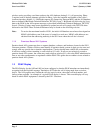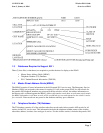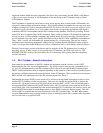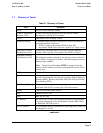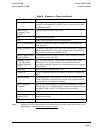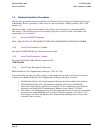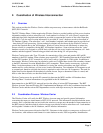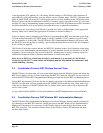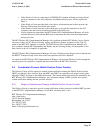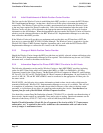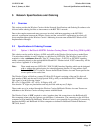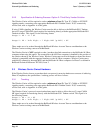
CG-EWCG-001 Wireless E911 Guide
Issue 3, January 6, 2004 Coordination of Wireless Interconnection
2. Coordination of Wireless Interconnection
2.1 Overview
This section provides the Wireless Carrier with the steps necessary to interconnect with the BellSouth
(BST) E911 network.
The FCC Wireless Phase 1 Order requires the Wireless Carrier to provide both the cell site sector location
information and the wireless subscribers call - back number for wireless 911 calls. Phase 2 requires the
additional data fields longitude and latitude be provided to represent the location of the caller when they
dialed 911. Cell site sector location information is provided in "static" database records as described in
TN Database Updates. The subscriber’s call - back number, longitude, and latitude must be provided real
- time during 911call processing. Various technical solutions may be chosen by the Wireless Carrier to
provide the required data to the ALI database. Wireless Carriers must work with Intrado to ensure the
chosen solution is compatible with the BST ALI database interfaces. Some solutions allow the "static"
database records to be assigned on a PSAP basis with the cell site sector location information, call - back
number, and the longitude / latitude being provided real-time during 911 call processing.
Wireless Carriers must order Type 2C trunks for transmission of the voice and pseudo-ANI (pANI)
numbers to the E911 tandem. Some solutions may require SS7 / ISUP trunking between the wireless MSC
and the E911 tandem. If SS7 connectivity will be used, refer to Appendix A of this guide. In addition to
these trunks, Wireless Carriers may be required to order two(2) digital data circuits with secondary channel
to the BST Automatic Location Identification (ALI) computers. These circuits are necessary to provide
Phase 1 real-time updates to the ALI database for storing the wireless subscribers ten digit call-back
number and for some solutions, cell site sector location information. Two redundant ALI computers work
as a mated pair, therefore a digital data circuit is required to each of the two ALI computers. The need for
digital data circuits depends on the technical solution chosen. Steps to determine if there is a need, and
how to order these circuits, are described in this section.
Wireless Carriers must also provide E2 connectivity between the MPCs and the ALI database hosts
allowing Phase 2 location information to be populated in the ALI databases.
Interconnection to the BST E911 network involves the effort of various BST departments. The BST
Wireless Account Team and Wireless E911 Implementation Manager will be the coordinators between the
Wireless Carrier and the various BST departments to assist with steps necessary for interconnection.
2.2 Coordination Process: Wireless Carrier
The Wireless Carrier will notify the BST Wireless Account team and provide general information
concerning the request to interconnect to BST’s E911 network. This information should include the states,
counties, and / or parishes that are involved in the wireless coverage area, the method of interconnection to
the BST network, and the technical solution chosen to provide the wireless subscribers call - back number
and longitude / latitude to the ALI database, and E2 interface information.
Wireless Carriers must meet with each of the E911 Customers in the wireless coverage area to discuss cell
site locations, valid addresses and formats for static database records, ESN assignments, identification
Page 9




